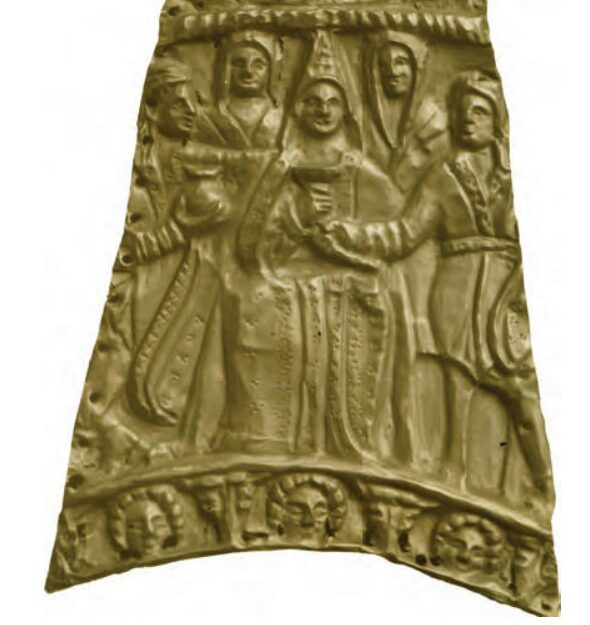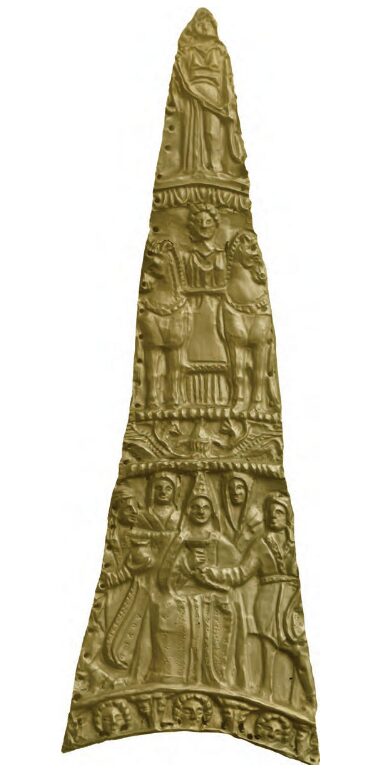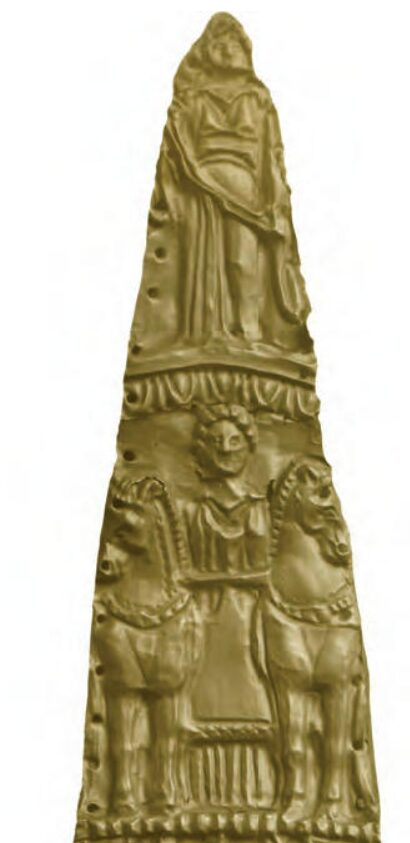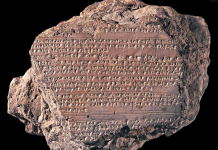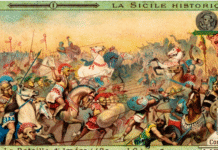“The Scythians worship only the following gods: Hestia above all, then Zeus and Gaia… Hestia in Scythian is called Tabiti, Zeus is Papaios, Gaia – Api…” (Herodotus, 4.59). Doctor of History Dmitriy Raevskiy (1941-2004) who specialized in Scythian archaeology tried to define the function of Tabiti by analyzing the function of the Greek goddess Hestia first with whom Herodotus observed certain similarities: “In Greece during the classical period, Hestia was perceived mainly as the goddess of the hearth in the home and she did not play a major role in theology and mythology. However, a comparative-historical study of this image reveals that it is based on the ancient fire god of all Indo-Europeans, which in the mythology of the Indo-Aryans is paralleled by the god Agni, and in the Iranian world – by Atar. It is important in this case that the Greeks identified the fire worshipped by the Iranians again with Hestia. The stable ancient Greek tradition in which every sacrificial rite starts and ends with the sacrifice to be offered to Hestia, and each appeal to the gods starts by mentioning her name, finds a direct analogy in the Vedic arias: here the mentioning of the gods is a canonical element; even the Rigveda starts with a hymn to Agni and ends with a hymn addressed to that deity. It is possible to assume common roots of this practice also in the most ancient Indo-European ritual and its reflection may be considered to be the placing of Tabiti in the beginning of Herodotus’ description of the Scythian pantheon…
…Three “levels” can be clearly identified in the pantheon described by Herodotus: Hestia-Tabiti is worshipped “higher than the rest” or “above the rest”, “besides that” or “after that” – Zeus and Gaia, “after them” or “later” – the remaining four deities. It is interesting to trace the sequence with which the deities have been listed and their grouping at the cited levels. The comprehensive analysis of these features should give an idea about the main figures of Scythian mythology.
The closest analogy of her name can be found in the name of the Old-Indic epic figure Tapati, the beautiful daughter of the Sun God, whose body was brilliant like fire, and who was basically a mythical image. The same root can be traced in the Old-Indic concept of tapas, meaning cosmic warmth, original nature, the universal cosmic principle from which both the various elements of the Universe and order in the world as a whole originate. This notion is also similar to the mythology of the Vedic Agni, i.e. of the fire which can be found simultaneously in all zones of the Cosmos, permeating the whole Universe, the world of human beings, and the world of the gods…
This goddess has been referred to reliably in only one other source: in the description given by Herodotus of the war between Scythians and Persians (IV. 127). The Scythian king Idanthyrsos, outraged by Darius’ claims to call himself his master, replied to him angrily: ‘I recognize as my masters only Zeus, my progenitor, and Hestia – the Queen of the Scythians.”
Further below, we shall return to the explanation of all these features. Another interesting specificity of the Scythian fire deity is that it appears in a female hypostasis, while in the other Indo-Iranian traditions the fire god is, as a rule, a male figure. On the other hand, in Greek and Roman mythology this deity has a female image (the goddess Hestia-Vesta), whose direct influence on Scythia is highly unlikely. The female nature of Tahiti is most frequently explained by the presence of some anachronisms from the earlier matriarchate…”
Some scholars think that the Goddess represented on the famous Karagodeuashkh plate is Tabiti. Other variants including depiction of the plate can be found in the “Cradle of Civilizations” book. Another book, “Royal Scythia, Greece, Kyiv Rus” has little-known facts about the beginning of the Amazon movement and its presence in the territory of present-day Ukraine.
